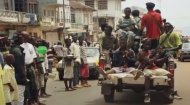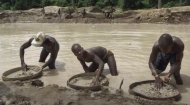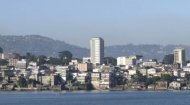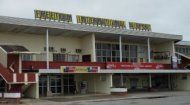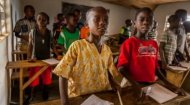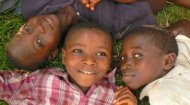|
Sierra Leone is a melting pot of over eighteen ethnic groups, each contributing to a vibrant cultural mosaic. The largest groups include the Mende in the south, the Temne in the north, and the Limba, alongside the Krio people, descendants of freed slaves, who are concentrated around Freetown. While English is the official language, Krio serves as the widely spoken lingua franca, understood by approximately 90% of the population, facilitating communication across diverse communities. Religious harmony is a hallmark of Sierra Leonean society, with a significant majority practicing Islam or Christianity, often interwoven with traditional African beliefs. Mosques and churches stand side-by-side, and it’s common to see people of different faiths celebrate each other’s holidays, embodying a spirit of peaceful coexistence.
Sierra Leone's economic profile is largely agrarian and resource-based. Agriculture employs a significant portion of the population, with staple crops like rice, cassava, and plantains cultivated alongside cash crops such as coffee, cocoa, and palm oil. However, the nation is most famously known for its mineral wealth, particularly diamonds, which have historically played a double-edged role, both enriching and destabilizing the country. Beyond diamonds, Sierra Leone also possesses significant reserves of rutile, bauxite, and gold. The post-conflict era has seen concerted efforts to diversify the economy and attract foreign investment. Challenges persist, including inadequate infrastructure, high unemployment rates (especially among youth), and persistent issues of governance and corruption. The economy remains vulnerable to fluctuations in global commodity prices and external shocks, as evidenced by the impact of the Ebola crisis and global economic slowdowns. Despite these hurdles, there is considerable untapped potential. The government is working towards improving the ease of doing business, investing in energy and transport infrastructure, and promoting sectors like fisheries, tourism, and renewable energy. A growing entrepreneurial spirit, particularly within the informal sector, also contributes significantly to daily economic activity, reflecting the people's ingenuity and determination. Despite this pverty remains widespread, particularly in rural areas, leading to issues of food insecurity and limited access to basic services. Cont/... |
Sierra Leone Profile |
Sierra Leone Profile |
Sierra Leone Profile | Sierra Leone Profile |
Take our online trivia quiz and see how much you know about Sierra Leone including interesting facts.
More >
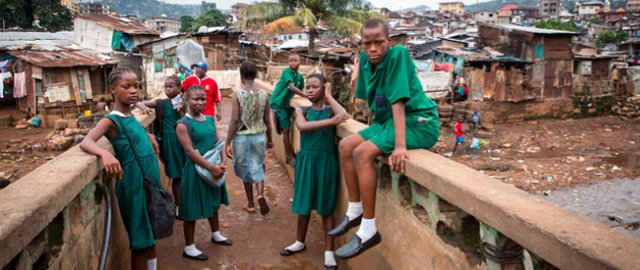
|
Infrastructure development is crucial but lags behind, with many communities lacking reliable access to clean water, electricity, and paved roads. Healthcare facilities, though improving, were severely tested by the Ebola crisis and still require significant investment to meet the needs of the population effectively. Education, while prioritized, faces challenges in terms of funding, teacher training, and rural access. Environmental concerns are also pressing. Deforestation, largely due to unsustainable logging and agricultural practices, contributes to soil erosion and climate change vulnerability, especially impacting coastal communities and farmers. Strengthening governance, combating corruption, and promoting sustainable resource management are ongoing efforts critical for the nation's long-term prosperity. Sierra Leone's journey is one of continuous overcoming, reflecting a deep-seated national resilience. Life in Sierra Leone is a vibrant blend of tradition and modernity, peace and purposeful bustle. In Freetown, the capital teems with activity – crowded markets selling everything from fresh produce to electronics, poda-podas (minivans) navigating traffic with colorful flair, and the constant hum of commerce and conversation. Daily commutes often involve navigating lively streets, with street vendors offering quick bites like fried plantains, roasted groundnuts, or freshly baked bread. Outside the urban centers, daily life shifts to a more rural, agricultural rhythm. Farming communities rise early, tending to their fields, while fishermen head out to sea in their colorful pirogues. Meals are communal affairs, typically centered around rice – the national staple – served with rich, spicy stews made from groundnuts, cassava leaves, or fresh fish. Football is the national passion, with impromptu matches played on dusty pitches across the country, uniting communities in cheers and rivalries. Evenings are often spent socializing, sharing stories, and listening to music. Despite socio-economic difficulties, Sierra Leoneans maintain a powerful sense of community, sharing what they have and finding joy in simple pleasures. Laughter, resilience, and an open-hearted approach to life characterize the everyday experience. For the adventurous traveller, Sierra Leone offers an authentic and unforgettable experience, providing a glimpse into West Africa largely untouched by mass tourism: Freetown: The capital boasts historical sites like the iconic Cotton Tree, a symbol of freedom, and the Sierra Leone National Museum. Explore the unique Krio architecture in neighborhoods like Maroon Town and take in the bustling atmosphere of Lumley Beach, a popular spot for locals. The Tacugama Chimpanzee Sanctuary, just outside Freetown, offers a heartwarming experience with rescued chimpanzees. Today many are under educated, most un or under employed as well with high unemployment particularly affecting young people (60%), the very young people who were so brutalised as those child soldiers. As such, many attempt to cross illegally in Europe in the hope of finding a better life only for them to die at sea or end up in detention centres once arriving in the EU, mainly via Spain and Italy. Sierra Leone is in 185th place out of 193 countries and territories in 2025 when ranked in terms of life expectancy, literacy, access to knowledge and the living standards of a country. Find out more about Sierra Leone today in the profile pages above. |
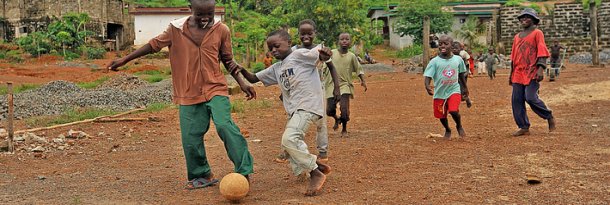
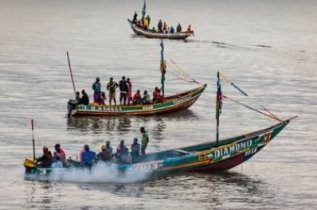 Community and family ties are exceptionally strong. Hospitality is deeply ingrained, and visitors are often struck by the warmth and welcome extended by locals. Music and dance are integral to daily life and celebrations, with genres ranging from traditional folk music to popular Milo Jazz and Bubu music, filling the air with infectious rhythms. Education is highly valued as a pathway to advancement, though access and quality remain areas of ongoing focus and improvement. Sierra Leonean society, despite its past traumas, is characterized by its resilience, its embrace of diversity, and an unwavering commitment to collective well-being.
Community and family ties are exceptionally strong. Hospitality is deeply ingrained, and visitors are often struck by the warmth and welcome extended by locals. Music and dance are integral to daily life and celebrations, with genres ranging from traditional folk music to popular Milo Jazz and Bubu music, filling the air with infectious rhythms. Education is highly valued as a pathway to advancement, though access and quality remain areas of ongoing focus and improvement. Sierra Leonean society, despite its past traumas, is characterized by its resilience, its embrace of diversity, and an unwavering commitment to collective well-being.